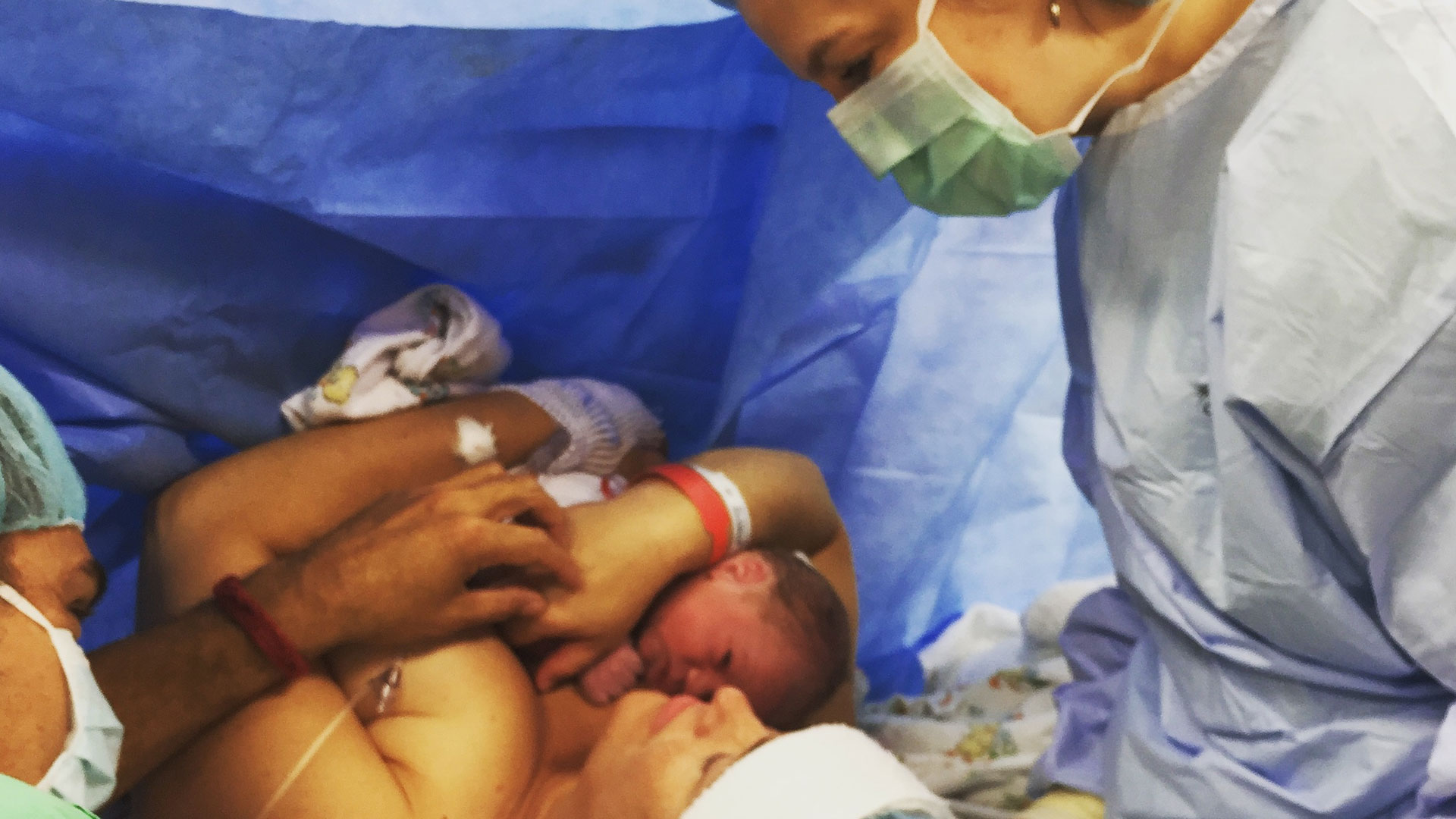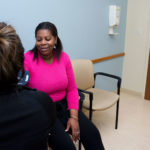Midwives think of birth as a normal life process. We recognize the power of your body to support pregnancy and give birth. However, we know sometimes, a cesarean birth (c-section) is necessary and can be lifesaving. Our goal is to help you navigate pregnancy, childbirth, and the transition to parenthood. Midwives are committed to you having a positive birth experience regardless of if you give birth by c-section or vaginally. Having a cesarean may bring up a range of feelings, from joy and relief to disappointment. The following are some common questions midwives get about cesareans.
What are the reasons I may need a cesarean?
Some complications arise in pregnancy that may cause your midwife or doctor to recommend you deliver by c-section. These include when your baby is breech, you have placenta previa (when the placenta is low in the uterus and covering the cervical opening), or multiple pregnancies (especially triplets or quadruplets+). Sometimes the baby or the mother has a diagnosed medical condition that would make cesarean a safer delivery route. If your provider recommends a cesarean during your pregnancy, make sure and ask why this recommendation and if there are any other options. In most cases, cesarean recommendations occur in labor. Fetal distress, slow or stalled labor progress, malposition of the baby, or infection are common reasons for c-section births. You can ask your midwife or doctor in pregnancy and labor about your specific
risk for needing a cesarean. Cesareans should be performed only for medical reasons.
What are the risks of c-sections?
Cesarean is a major abdominal surgery that does come with risks to you and your baby. The most common risks encountered by mom are blood loss, infection, postoperative pain, increased chance of developing a blood clot, and a longer hospital stay. A cesarean may delay your milk coming in if you plan to breastfeed. The baby’s risks include breathing problems at the time of birth, accidental fetal injury, and a higher chance of getting asthma. New research has also shown that infants born by cesarean have less diversity in their microflora, impacting immunity, and overall health.
How will a c-section now impact my future births?
Having a cesarean puts you at greater risk in future pregnancies of needing another c-section and
of having problems with your placenta in your next pregnancy. Many women who have had a
prior c-section can have a vaginal birth with their next pregnancy, sometimes called a VBAC.
How can I make my cesarean birth experience more meaningful?
Your baby’s birth is an important day in your life and should feel special to you. Because a c-section is a surgery, it can feel like people forget that it is also a birth. Talk with your provider about your hopes for your birth. Some cesarean birth plan requests we often see include:
- Music of choice
- Delayed cord-clamping
- Skin-to-skin right away in the operating room
- Partner present throughout the birth
- A doula or additional support person
- Photography
- Special drapes—Skin-to-skin pass-through drapes or clear drapes to see your baby right away
How can I prevent needing a cesarean?
The first step is to choose a provider who is committed to reducing your risks of cesarean. Ask
about the provider and hospital cesarean rates. It is surprising, but sometimes even within the
same community, there can be a drastic difference in c-section rates from provider to provider
and hospital to hospital. Midwifery care has been shown to reduce your chances of a cesarean.
Other ways to reduce risks include having a doula, attending prenatal childbirth education, and
incorporating movement in pregnancy.
What is recovery from cesarean like?
Like any surgery, it takes a while to recover after a cesarean. For the first 2-3 days, you will be in
the hospital. You should ask your team of care providers about pain medication that is safe for
you and your baby, too, if you are breastfeeding. It may feel painful to lift yourself in and out of bed at
first because your core will be weaker after the surgery. It is good to walk around while at the
hospital and go for light walks once you get home. You want to avoid over-activity, and if you
have stairs, try to limit the number of trips up and down. Usually, in 4-6 weeks, you will start to
feel more like yourself. Your tummy may feel numb for much longer.





